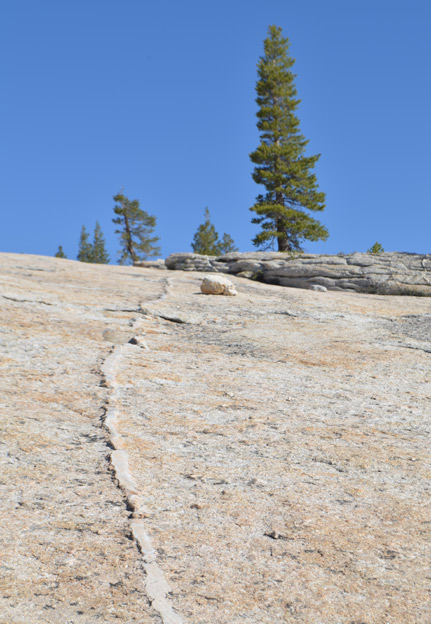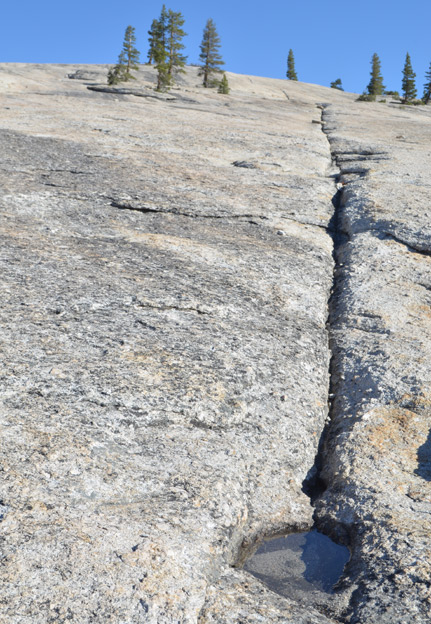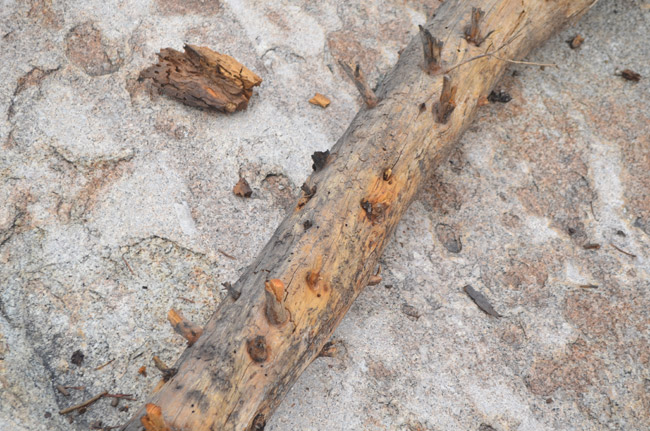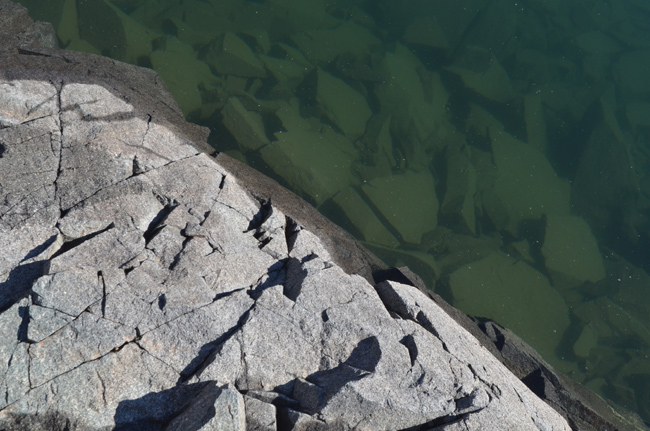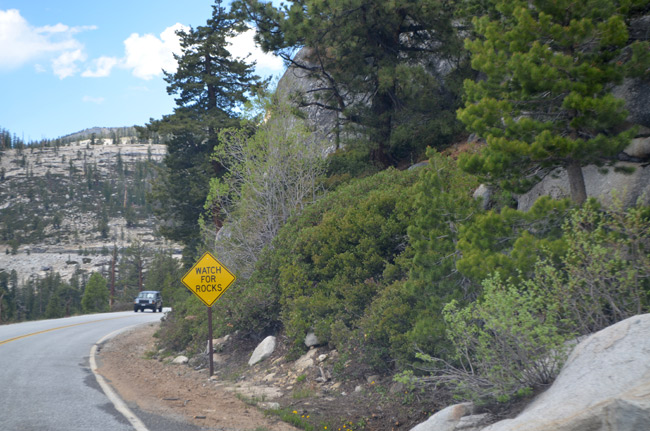Rock | Water
| Wood
|
| Granite defines Yosemite’s
landscape. Shaped by glaciers long ago, the rock continues to be
worn by the elements; temperature changes and rain, snow and ice cause
and expand cracks. Additionally lichens, moss, ferns and other
plants
gain hold and cause further wear. Rockfalls happen every year in
the Park; the
National Park Service reported “43
documented rockfalls in 2012, with an approximate cumulative volume of
about 700 cubic meters (about 2,100 tons).” |
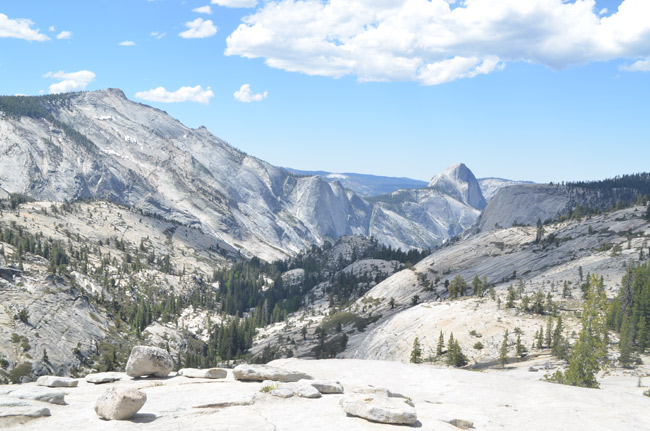 |
The view from Olmstead Point
shows vast expanses of granite.
|
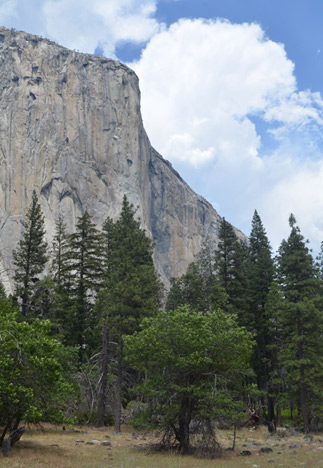 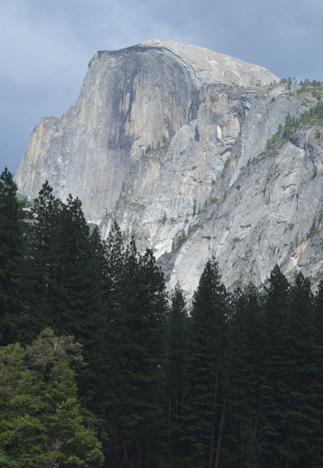 |
Iconic faces of granite--El
Capitan and Half Dome.
|
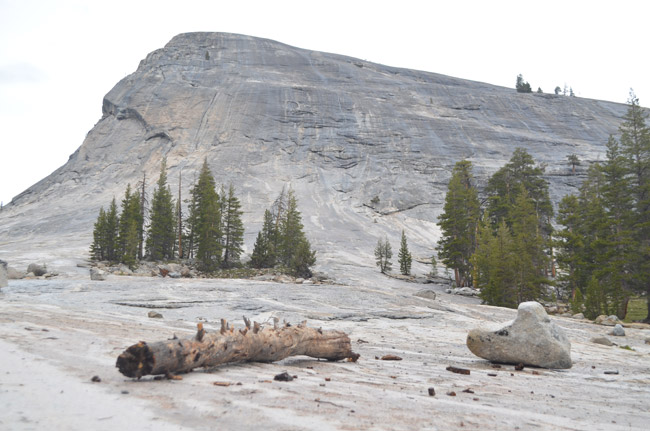 |
Lembert Dome, Tuolumne Meadows.
|
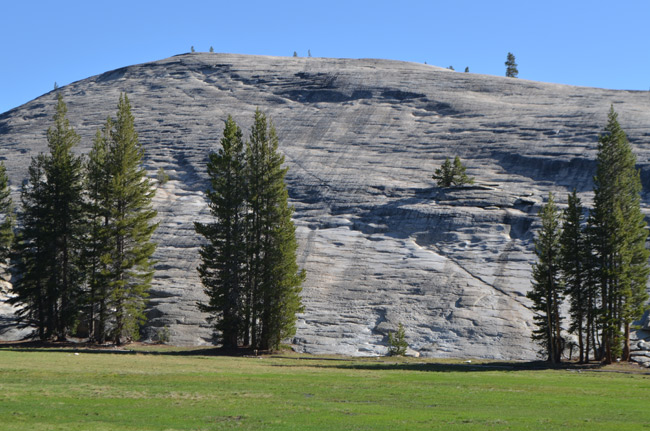
|
Pothole Dome, Tuolumne Meadows.
|
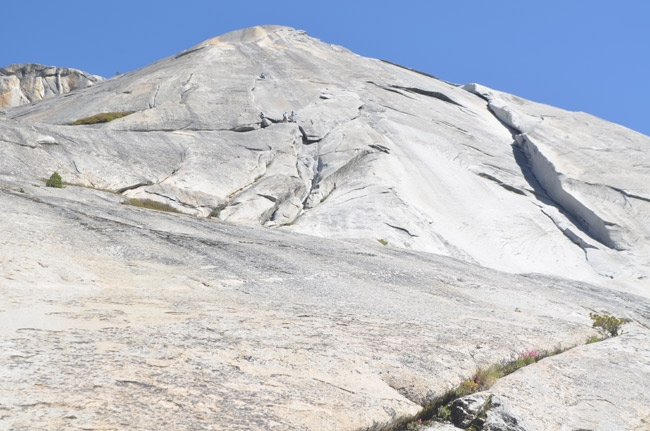 |
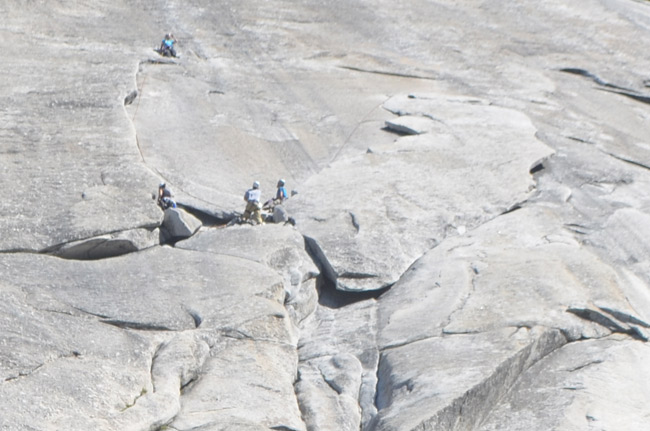 |
A rock face across the road from
Tenaya Lake. In the vignette above, rock climbers make their way
along an edge where a piece of granite has sheared off.
|
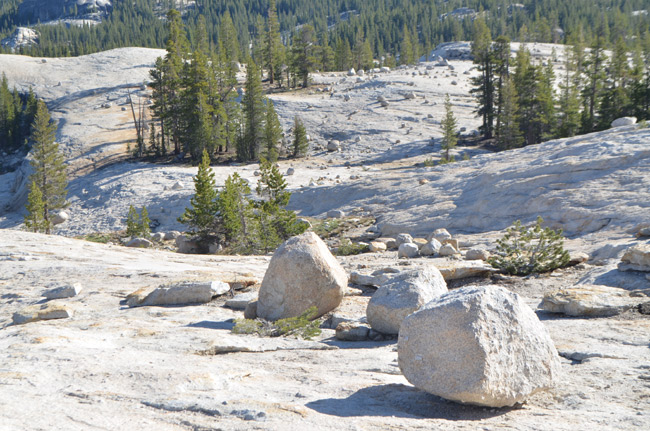 |
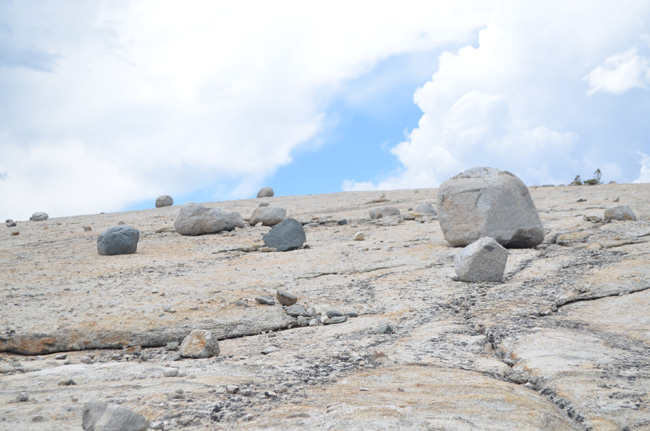 |
Erratics, boulders that have
been carried along and deposited by glaciers, add a whimsical touch to
the landscape. (Top, Pothole Dome; bottom: Lembert Dome).
|
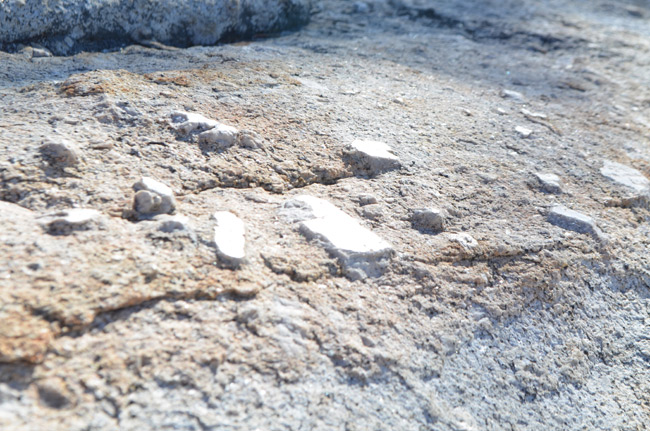 |
Small bits of glacier polish on
Pothole Dome reflect the sun. In some areas, near Tenaya Lake for
example, there
are fairly large stretches where in the early morning/late evening the
reflection off the glacier polished rock can be quite blinding.
|
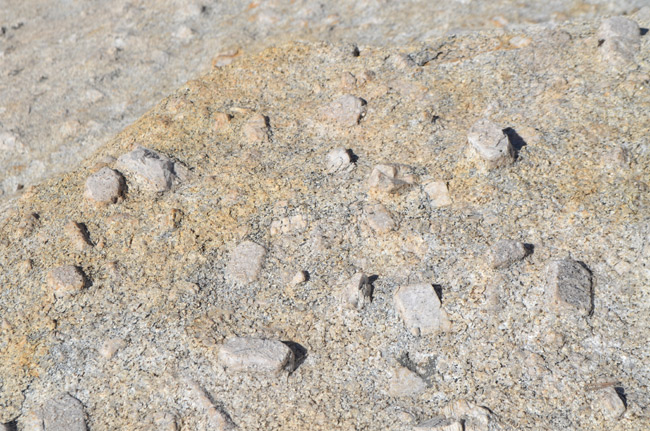 |
Inclusions on Pothole Dome.
|
 |
Moss on Pothole Dome.
|
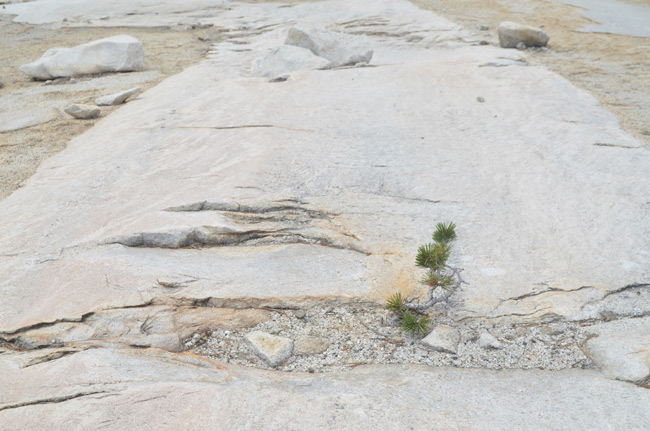 |
A vein near Olmstead Point
includes a worn area with a small pine tree.
|













